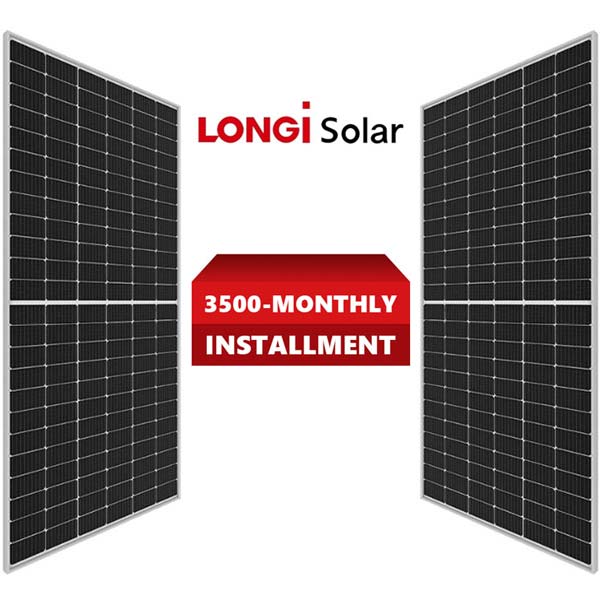Solar Panel Price
Longi 340w Price: 19312 - Retail Price:
24140Longi 385w Price: 21868 - Retail Price:
27335Longi 440w Price: 24992 - Retail Price:
31240Longi 460w Price: 26128 - Retail Price:
32660Longi 545w Price: 30956 - Retail Price:
38695Longi 585w Price: 33228 - Retail Price:
41535Longi 650w Price: 36920 - Retail Price:
46150Longi 670w Price: 38056 - Retail Price:
47570Longi 1000w Price: 56800 - Retail Price:
71000Jinko 1000w Price: 64800 - Retail Price:
81000Jinko 630w Price: 39803 - Retail Price:
51030Jinko 585w Price: 36960 - Retail Price:
47385Jinko 475w Price: 30010 - Retail Price:
38475Inverex 170w Price: 7900 - Retail Price:
13500Inverex 540w Price: 38400 - Retail Price:
48500Trina 550w Price: 34800 - Retail Price:
44500Trina 490w Price: 28599 - Retail Price:
37200JA 420w Price: 24885 - Retail Price:
33180JA 540w Price: 31590 - Retail Price:
42120Canadian 665w Price: 35411 - Retail Price:
47215Canadian 540w Price: 30375 - Retail Price:
40500
Solar sunlight refers to the light and energy emitted by the Sun that reaches the Earth's surface. Sunlight is essential for solar energy generation as it provides the source of energy for solar panels to convert into electricity. Here are some key points about solar sunlight:
- 1. Electromagnetic Spectrum: Sunlight consists of electromagnetic radiation that spans a wide range of wavelengths, from radio waves to gamma rays. The portion of sunlight that is relevant for solar energy is primarily in the visible and near-infrared spectrum.
- 2. Solar Irradiance: Longi Solar irradiance is a measure of the power per unit area received from the Sun. It represents the intensity of sunlight reaching a particular location and is typically measured in watts per square meter (W/m²). Solar irradiance varies depending on factors such as time of day, season, geographical location, atmospheric conditions, and shading.
- 3. Angle of Incidence: The angle at which sunlight strikes a solar panel affects its effectiveness in generating electricity. Sunlight that strikes the panel perpendicularly (at a 90-degree angle) is more efficient in producing electricity 460 compared to oblique angles. As the angle of incidence deviates from perpendicular, the amount of energy absorbed by the panel decreases.
- 4. Direct and Diffuse Sunlight: Sunlight can be classified into direct sunlight and diffuse sunlight. Direct sunlight refers to the light that reaches the Earth's surface without being scattered by the atmosphere, whereas diffuse sunlight is the light that has been scattered in various directions due to atmospheric particles and clouds.
Harnessing solar sunlight through solar panels allows the conversion of solar energy into usable electricity. The efficiency and productivity of solar panels depend on the amount and quality of sunlight they receive, making the proper placement and orientation of panels crucial for maximizing energy production.
